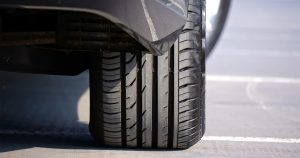
If one thinks about the fact that tires are the parts of a vehicle that actually connect to the road, the importance of maintaining them cannot be overestimated. Apart from the fact that looking after your tires will keep you safe on the road, it will also extend their life span. Here are a few tips on how to take good care of your vehicle’s tires.
1. Proper Inflation
Ensuring that your tires are inflated correctly will prolong their life and prevent damage that could endanger your safety. Tires that are under-or over-inflated will cause uneven wear on your tires and will also accelerate their wear in general. Under-inflated tires can cause heat to build up within the tire, which could lead to a blowout. In addition, tires that are not properly inflated will increase your gas usage.
You should check the inflation of your tires at least once a month and also before you go on a long trip. To find the correct pressure, either check your owner’s manual or the label on the door edge on the driver’s side. It is also recommendable to keep a tire gauge with you in the car, for those times that your tires may lose pressure due to hitting a curb or a pothole.
2. Balance and Alignment
It is important to balance and align your tires at regular intervals. Problems with alignment will cause your tires to wear unevenly and will also negatively affect your vehicle’s suspension components. There are a few ways in which to gauge whether there are issues with your car’s alignment, including a steering wheel that vibrates at higher speeds or when the car pulls to the one side. You can also visually inspect your tires to check for uneven wear. To find out how often you should do an alignment, consult the owner’s manual.
Balancing your car’s tires is just as important, as it increases your tires’ longevity and makes for a smooth ride. When tires are not balanced properly, you will feel a vibration when driving, which leads to tire damage. You can also check your owner’s manual to learn how often you should balance your tires. In general, both balancing and alignment should be checked around every 5,000 to 6,000 miles, or with the purchase of new tires.
3. Summer Versus Winter Tires
Once the cold winter months are over, you should swap your winter tires for summer tires. Winter tires feature a more pliable tread rubber for improved traction on slippery and icy roads. When you drive around with winter tires on a hot surface and in warm temperatures, this pliable rubber wears down very quickly. In addition, while winter tires deliver improved performance and traction in cold driving conditions, they actually make for sluggish handling and response in the hot summer months.
These are just a few ways in which you can ensure the longevity of your tires. Apart from saving you on gas and the cost of having to regularly buy new tires, taking care of your tires is also very important to keep you safe on the road.
Image via Pixabay.com



